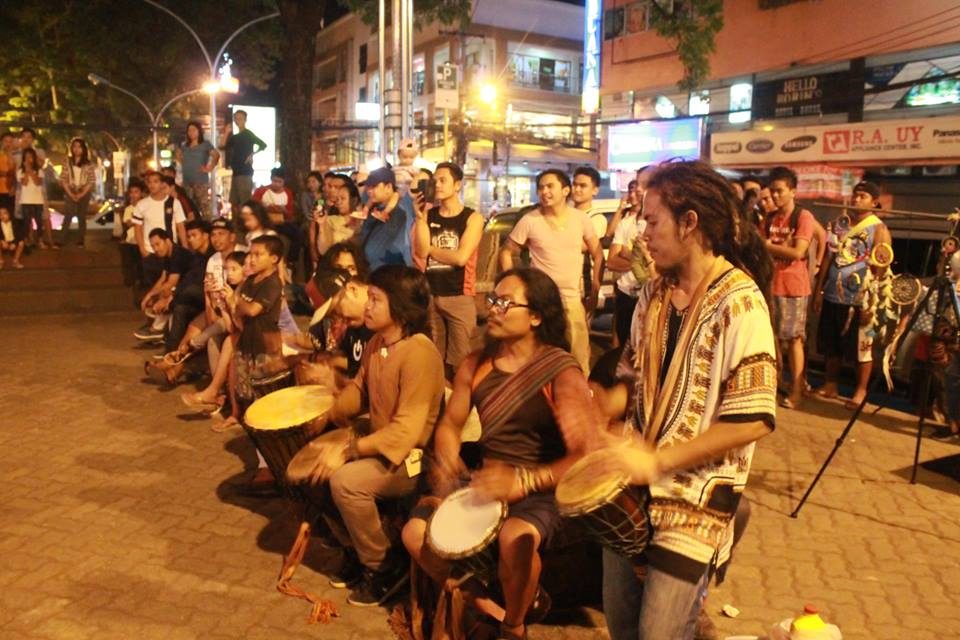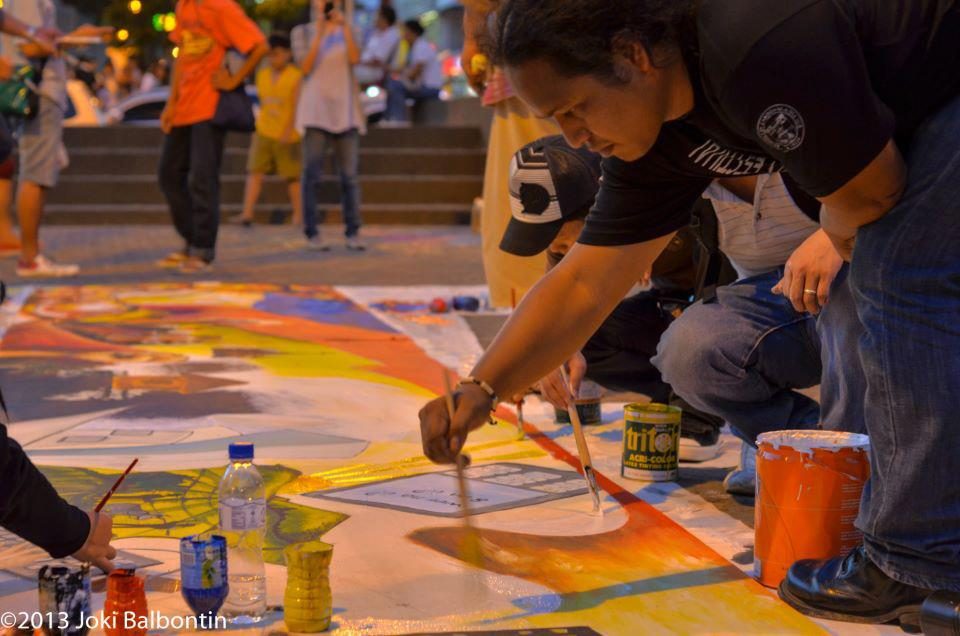SUMMARY
This is AI generated summarization, which may have errors. For context, always refer to the full article.

CAGAYAN DE ORO, Philippines – In Cagayan de Oro City’s Plaza Divisoria, across the monument of former President Ramon Magsaysay, a band of dreadlocked and tattooed artists gather on Friday evenings this summer.
Spread over carpets, hanging over makeshift posts are crafts woven by their hands – dream catchers, necklaces, wrist bands, and feathered accessories. With the lively beat of the drums, some of them dance amidst the dim street lights.
This weekly display and performance have become CDO’s newest attraction. Gathering local and foreign spectators, the group responsible for it have become artists by the bond they shared as friends. But before most of them discovered their creativity and found hope in their art, they had once been lost in a life of drug addiction, criminal activity, and extreme poverty.
The Dire Husi Initiative Inc, under the leadership of the National Commission for Culture and the Arts’ (NCCA) Northern Mindanao Representative for Visual Arts Rhyan Casiño, has inspired them to make the most out of life by the art that they do.
Fellowship of believers
The name, Dire Husi, is derived from the Cebuano word for here (dire) and the Manobo term for friend (husi).
The group exists as a fellowship. Though it didn’t start as one when it began in 2005.
“Dire Husi began as a sole proprietorship,” Casiño recalled. An artist whose works had been influenced by Bukidnon’s Tigwahanon community and whose music was set in tune with the culture of the Talaandig Tribe in Lantapan after his immersion, Casiño originally intended to start a business with his crafts.
“In one of the many exhibits I conducted after registering my business, street kids approached my display at the Tourism Showhouse in Divisoria,” he narrated. A man of faith after living a tumultuous life as a former drug dependent, Casiño said he prayed that his works will touch lives. The answer came when one street kid wanted to pursue art and, like Casiño, earn a living out of it.
He began to apprentice that child, until more came to him and his business eventually grew into a community of artists who share their creativity and learn from their experiences.
As their mentor, Casiño shifted the kids’ focus to creativity – painting soil on canvass, playing tribal instruments and crafting accessories fashioned after the sacred emblems of the indigenous people.
Vices and violence are prevalent on the streets, and unguarded homeless kids are almost often the victims. So Casiño took the initiative to care for them not only as his apprentice, but also like a family.
While their style in music is mainly inclined to Caribbean Rastafarians, and their artworks inspired by indigenous culture and tradition, their occasional fellowship meetings at the Artsville Hub in Upper Puerto, CDO, are centralized on Christian belief. (READ: Street kid turned missionary: The story of Paolo)
The fellowship is also a form of rehabilitation where each member, whether old or new, could share their experiences, help each other cope and relate with their stories, and train one another in their craft.
Some lives have indeed been changed by the company and influence of the group. While other members sought greener pastures by taking scholarships, earning college degrees, and pursuing missionary work, some of the members stayed as Dire Husi continues its advocacy to be the refuge for society’s outcasts. (READ: From street child to Atenean: The story of Rusty)
A decade of service

The organization became financially stable when the British Council in the Philippines’ I Am a Changemaker competition recognized Casiño’s project as one of the three winners in 2008, granting P100,000 for implementation.
His project, Dire Husi: Interconnecting Indigenous Young Artisans and Young Urban Fashionistas through Fair Trade (Intercultural Dialogue), along with the active proposal of then-University of the Philippines student Vincent Eugenio, sought to provide its members the start-up money to sell their artworks to local collectors.
The funds also contributed to the construction of their hub in Upper Puerto where they gather for fellowship and training. “We go there to share our ideas, to hone our skills, and of course, we also pray together and maintain devotions,” Casiño said.
This project has become the group’s advocacy to this day – providing stowaways, juvenile delinquents, and marginalized youth an outlet for their expression and creativity, as well as training them to make use of their talents for their livelihood.
“We also plan to bridge local artists to mainstream people,” Casiño noted. “We provide an avenue where misunderstood and stigmatized youth can express themselves in a creative manner that would inspire others.”
Hailed twice as one of the Ten Accomplished Youth Organizations in 2009 and 2012, Dire Husi also promotes the culture and heritage of the indigenous people in Northern Mindanao by the works of young artists.
Overcoming their past
“Are you willing to change?” Casiño would always ask this to new members who seek refuge in the group, particularly those who were previously addicted to drugs or were involved in criminal activity. “The decision must come from the person.”
He added that the group will stand firm with this advocacy as the stigma set against the marginalized continues. “We’re doing art for the community,” he said.
As Dire Husi members overcome their past struggles with substance abuse, they have proven that lives can change for the better. The organization has shown them that one’s worth and purpose can be found in art. – Rappler.com
Angelo Lorenzo is one of Rappler’s lead Movers in Cagayan de Oro.
For more information about the Dire Husi Initiative Inc., visit their Facebook page here.
Add a comment
How does this make you feel?
There are no comments yet. Add your comment to start the conversation.